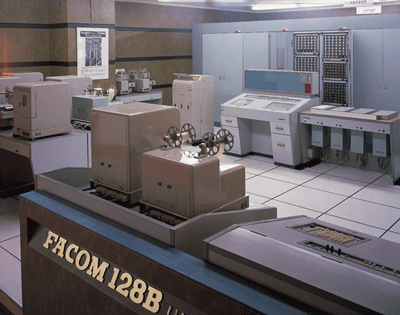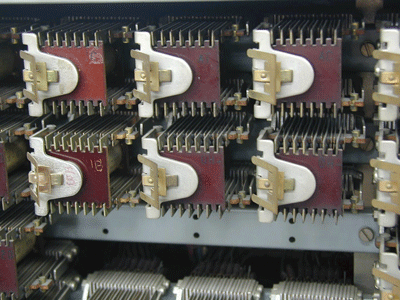

- Home >
- Artifacts of IP Heritage >
- 2008 >
- FACOM128B
FACOM128B


| Manufactured in | 1959 |
|---|---|
| Manufactured by | Fuji Tsushinki Seizo KK (Now, Fujitsu Limited) |
| Owner | Fujitsu Limited |
| Location of historical materials | Fujitsu Numazu Complex 140 Miyamoto Numazu-shi, Shizuoka Japan 410-0396 |
| Visitor information | Open to the public (Reservation required) |
| Contact | GENERAL AFFAIRS DEPT. https://www.fujitsu.com/jp/about/plus/museum/ikeda/tour/ |
FACOM128B is a relay-based commercial computer that was developed by the Fuji Tsushinki Seizo (now, Fujitsu). The vacuum tube used in early computers was unstable. To overcome this, Toshio Ikeda, head of computer development at the company, introduced the use of relay elements from telephone exchange equipment as logical elements. FACOM100, a relay-based computer, was completed in 1954. FACOM128A was the first relay-based commercial computer made in Japan and was completed in 1956, FACOM128B, a functionally enhanced version of FACOM128A, was completed in 1958. An existing unit, a FACOM128B model, was manufactured in 1959. This unit is still fully operable. (See photograph.)
The central processing unit of the FACOM128B used 5,000 relays, and had a 13-kbit memory unit which consisted of 13,000 relays that were interconnected by use of a crossbar switch. A self-monitoring and recovery function was also introduced to maintain the reliability of the FACOM128B in its role as a commercial computer. This function detects temporary errors and also returns the computer to its previous state, before re-attempting processing. While such technology is commonplace today, it was advanced at the time.
Supported by techniques aimed at achieving high reliability, the FACOM128B was a highly practical commercial computer. It was used in a wide variety of industries, ranging from the design of camera lenses to the Japanese-made passenger plane, the YS-11.
